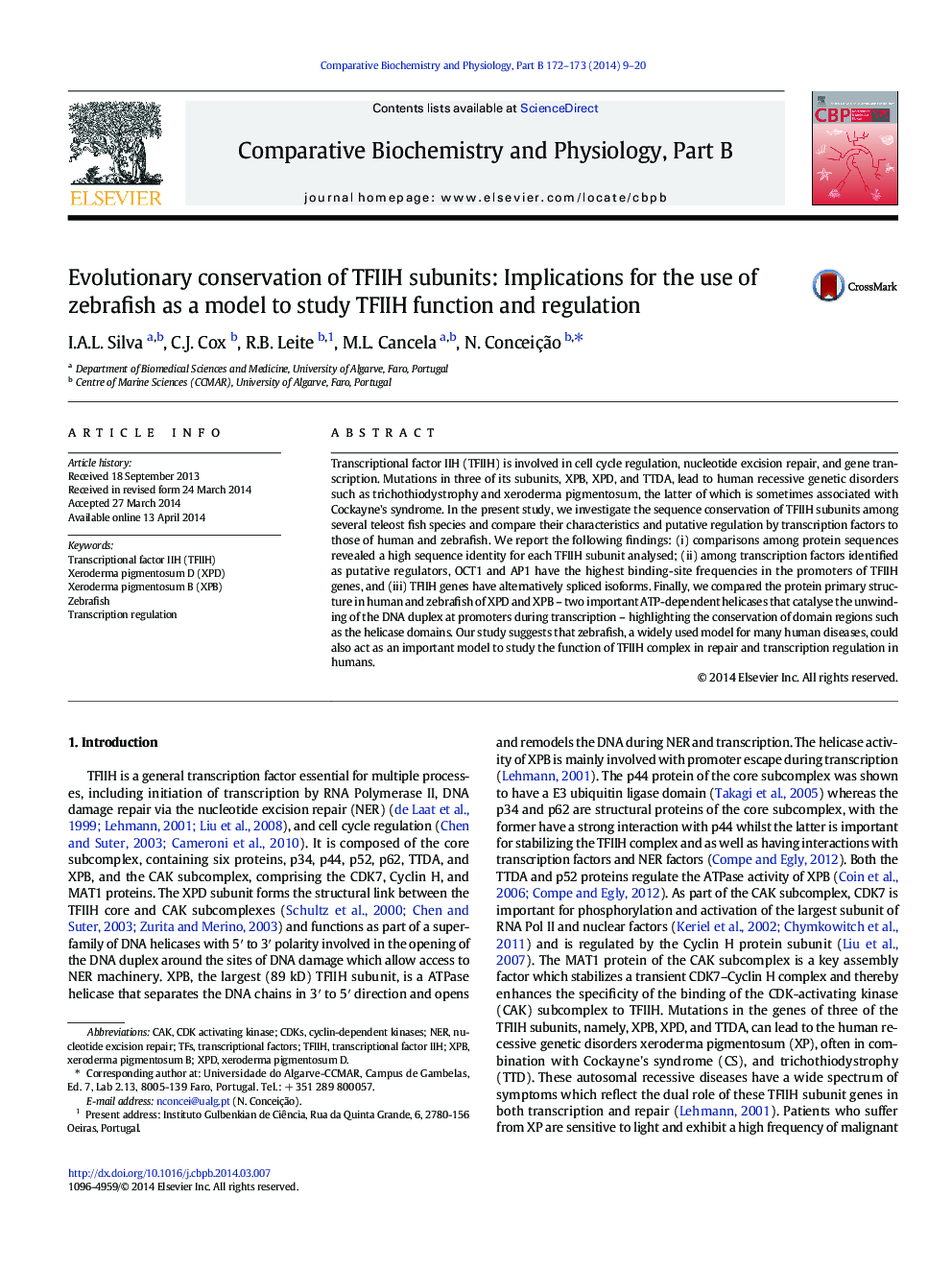| Article ID | Journal | Published Year | Pages | File Type |
|---|---|---|---|---|
| 8318905 | Comparative Biochemistry and Physiology Part B: Biochemistry and Molecular Biology | 2014 | 12 Pages |
Abstract
Transcriptional factor IIH (TFIIH) is involved in cell cycle regulation, nucleotide excision repair, and gene transcription. Mutations in three of its subunits, XPB, XPD, and TTDA, lead to human recessive genetic disorders such as trichothiodystrophy and xeroderma pigmentosum, the latter of which is sometimes associated with Cockayne's syndrome. In the present study, we investigate the sequence conservation of TFIIH subunits among several teleost fish species and compare their characteristics and putative regulation by transcription factors to those of human and zebrafish. We report the following findings: (i) comparisons among protein sequences revealed a high sequence identity for each TFIIH subunit analysed; (ii) among transcription factors identified as putative regulators, OCT1 and AP1 have the highest binding-site frequencies in the promoters of TFIIH genes, and (iii) TFIIH genes have alternatively spliced isoforms. Finally, we compared the protein primary structure in human and zebrafish of XPD and XPB - two important ATP-dependent helicases that catalyse the unwinding of the DNA duplex at promoters during transcription - highlighting the conservation of domain regions such as the helicase domains. Our study suggests that zebrafish, a widely used model for many human diseases, could also act as an important model to study the function of TFIIH complex in repair and transcription regulation in humans.
Keywords
Related Topics
Life Sciences
Biochemistry, Genetics and Molecular Biology
Biochemistry
Authors
I.A.L. Silva, C.J. Cox, R.B. Leite, M.L. Cancela, N. Conceição,
